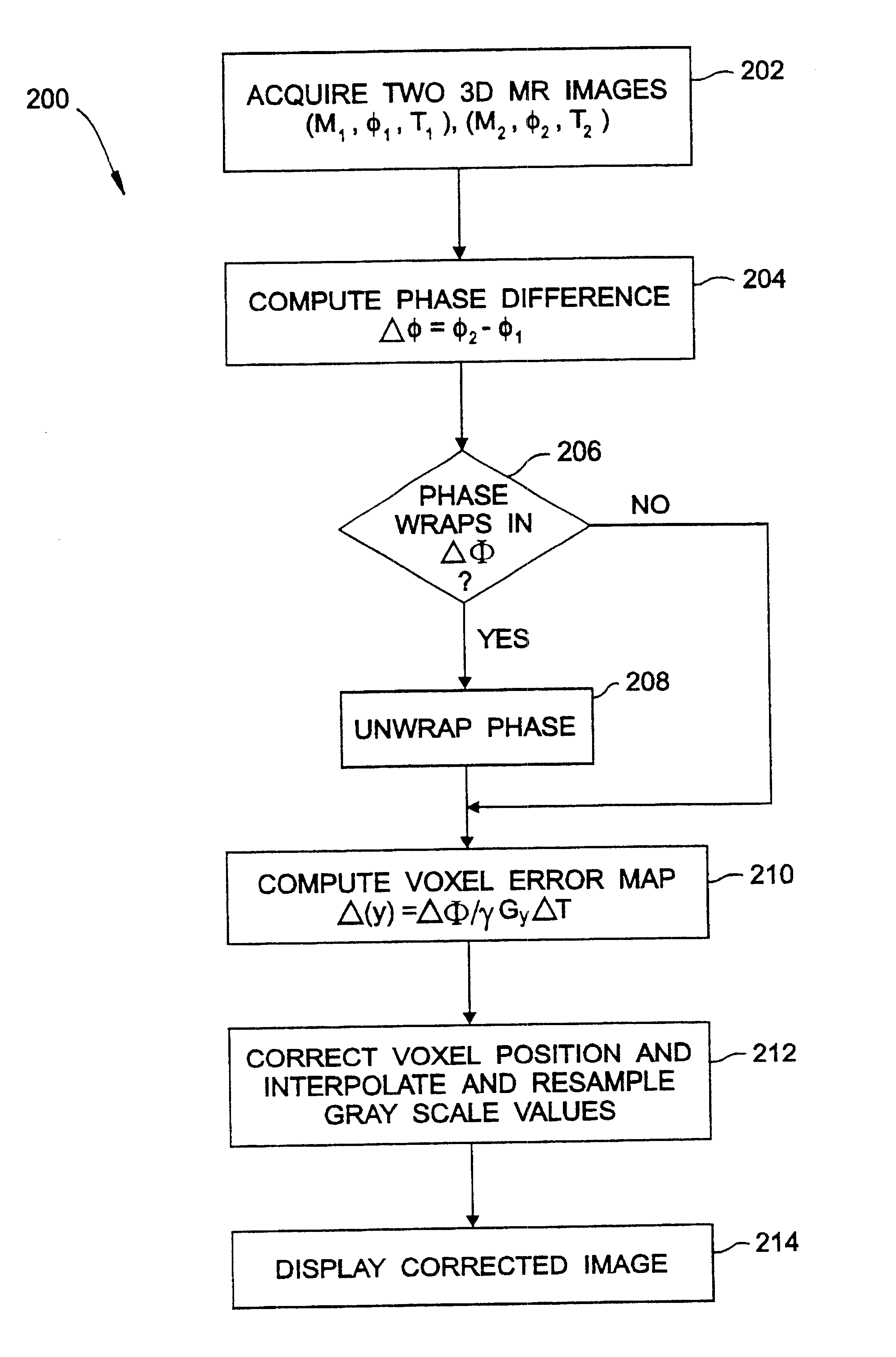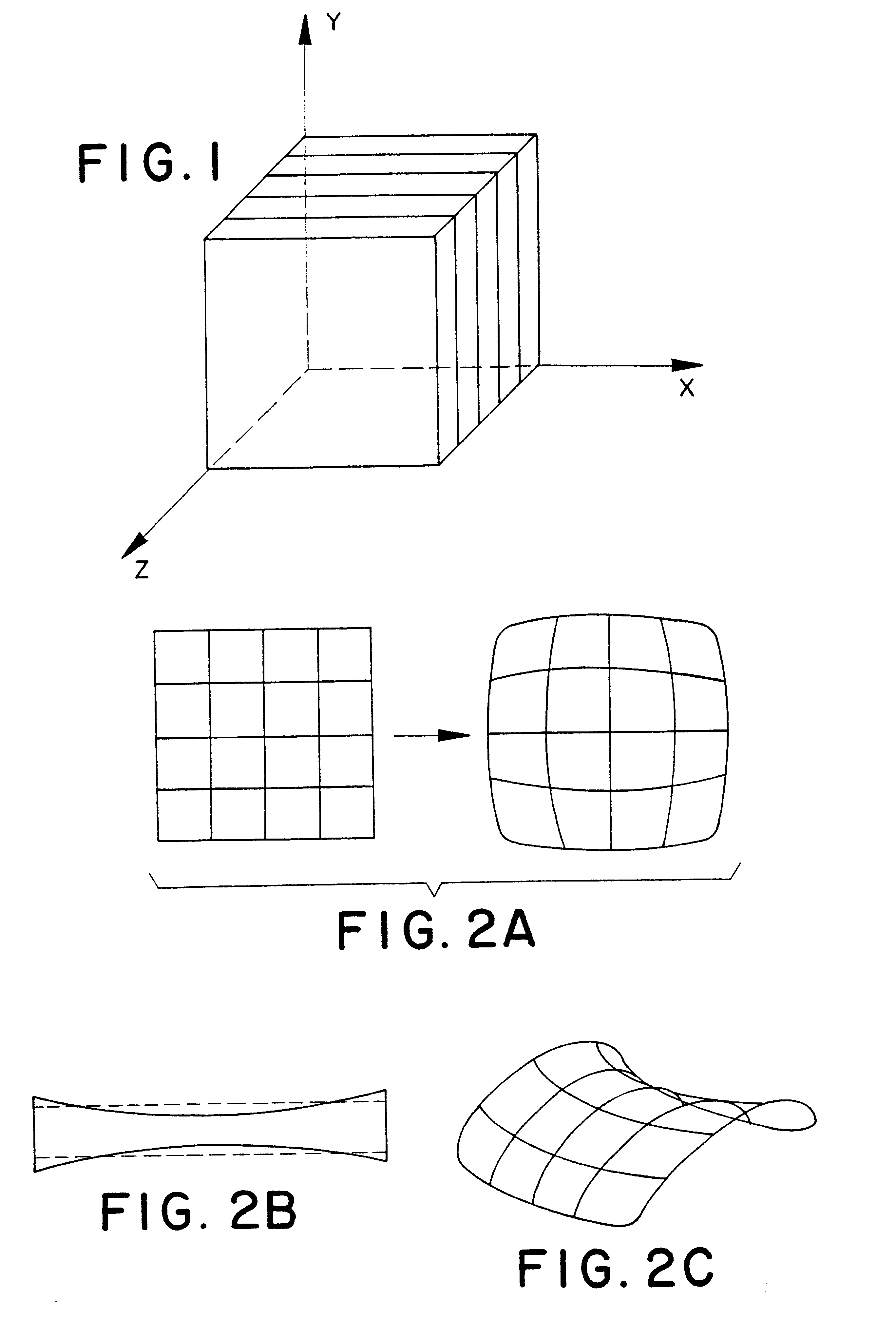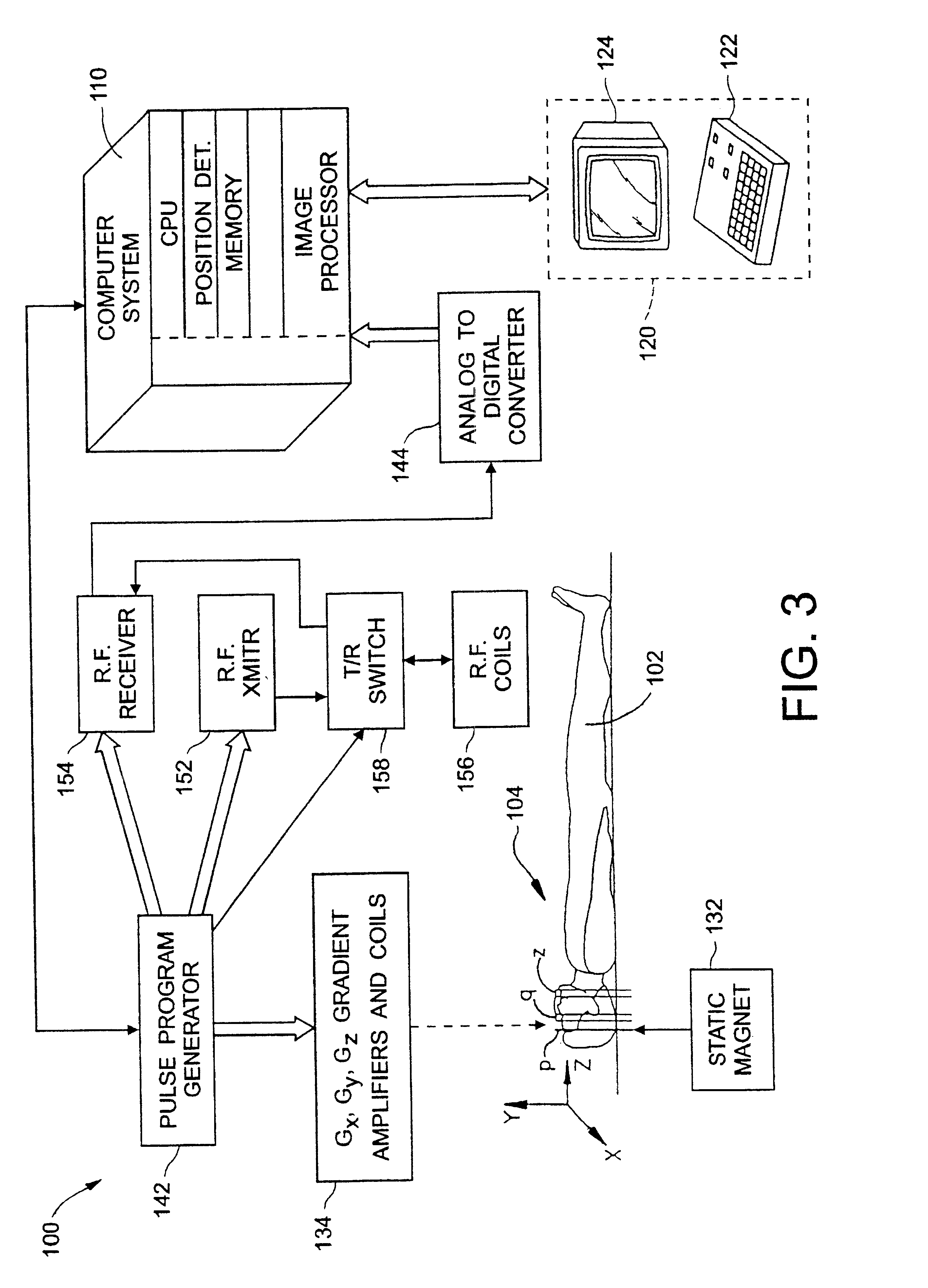Geometric distortion correction in magnetic resonance imaging
a magnetic resonance imaging and distortion correction technology, applied in the field of geometric distortion correction in magnetic resonance imaging, can solve the problems of limited ability to differentiate between components of inhomogeneous soft tissue structures, the frequency of use of ct is limited, and the usefulness of ct in imaging bony structures
- Summary
- Abstract
- Description
- Claims
- Application Information
AI Technical Summary
Benefits of technology
Problems solved by technology
Method used
Image
Examples
Embodiment Construction
A three-dimensional (3D) magnetic resonance imaging (MRI) system performs object-induced geometric distortion correction.
Exemplary 3D MRI System
FIG. 3 illustrates an exemplary three-dimensional (3D) magnetic resonance imaging (MRI) system 100 for performing object-induced geometric distortion correction in accordance with the present invention.
The operation of 3D MRI system 100 is controlled by a computer system 110. A console 120 comprising a control panel 122 and a display 124 communicates with computer system 110 to enable an operator to control the production and display of 3D MR images on display 124.
To produce images with 3D system 100 at least a portion of a subject 102 of interest is placed within an examination region 104. A static magnet 132 produces a substantially uniform, temporally constant magnetic field B.sub.0 along a desired z-axis such that selected nuclear magnetic dipoles of subject 102 within examination region 104 preferentially align with the magnetic field. ...
PUM
 Login to View More
Login to View More Abstract
Description
Claims
Application Information
 Login to View More
Login to View More - R&D
- Intellectual Property
- Life Sciences
- Materials
- Tech Scout
- Unparalleled Data Quality
- Higher Quality Content
- 60% Fewer Hallucinations
Browse by: Latest US Patents, China's latest patents, Technical Efficacy Thesaurus, Application Domain, Technology Topic, Popular Technical Reports.
© 2025 PatSnap. All rights reserved.Legal|Privacy policy|Modern Slavery Act Transparency Statement|Sitemap|About US| Contact US: help@patsnap.com



